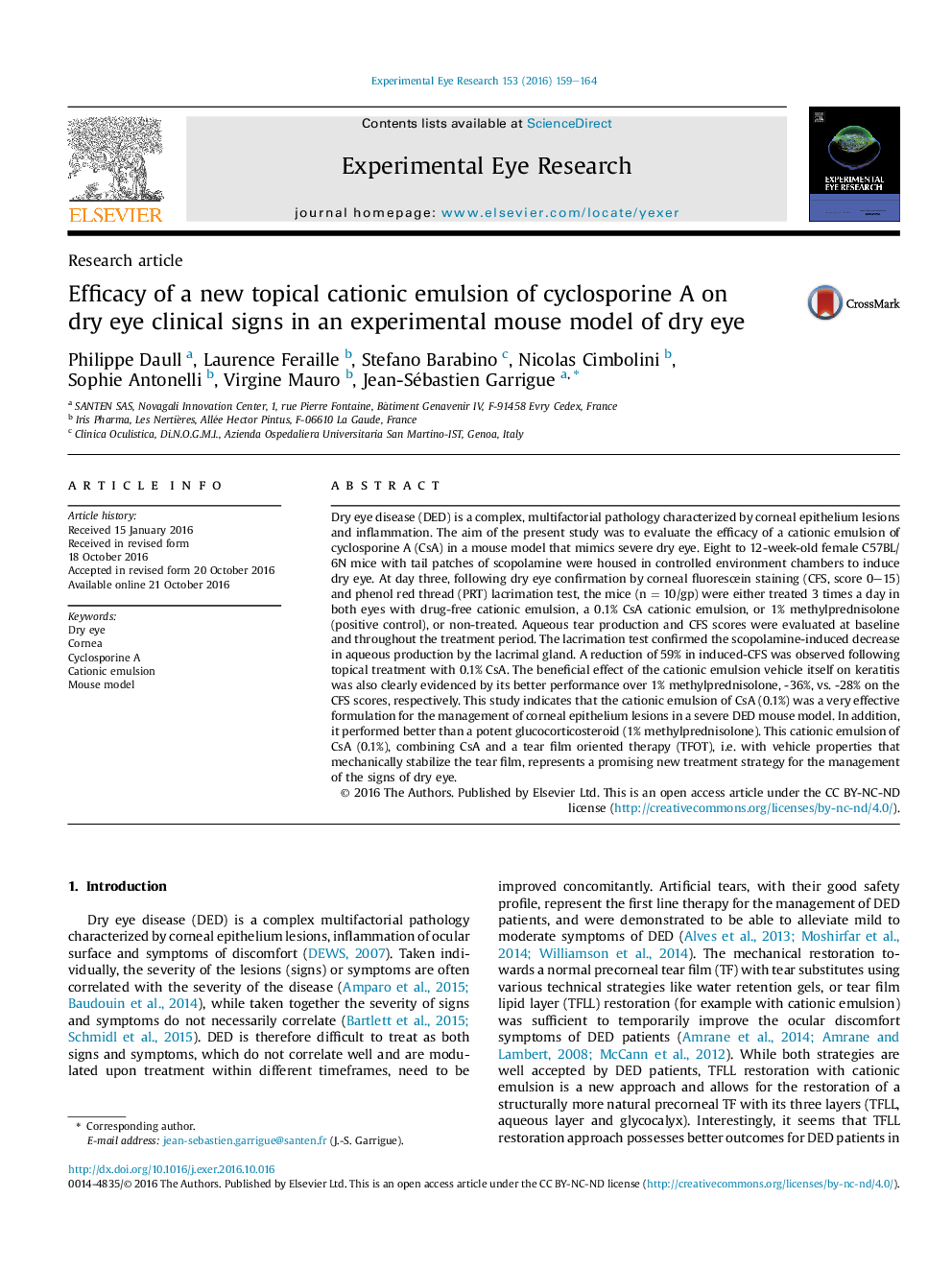| Article ID | Journal | Published Year | Pages | File Type |
|---|---|---|---|---|
| 5704093 | Experimental Eye Research | 2016 | 6 Pages |
Abstract
Dry eye disease (DED) is a complex, multifactorial pathology characterized by corneal epithelium lesions and inflammation. The aim of the present study was to evaluate the efficacy of a cationic emulsion of cyclosporine A (CsA) in a mouse model that mimics severe dry eye. Eight to 12-week-old female C57BL/6N mice with tail patches of scopolamine were housed in controlled environment chambers to induce dry eye. At day three, following dry eye confirmation by corneal fluorescein staining (CFS, score 0-15) and phenol red thread (PRT) lacrimation test, the mice (n = 10/gp) were either treated 3 times a day in both eyes with drug-free cationic emulsion, a 0.1% CsA cationic emulsion, or 1% methylprednisolone (positive control), or non-treated. Aqueous tear production and CFS scores were evaluated at baseline and throughout the treatment period. The lacrimation test confirmed the scopolamine-induced decrease in aqueous production by the lacrimal gland. A reduction of 59% in induced-CFS was observed following topical treatment with 0.1% CsA. The beneficial effect of the cationic emulsion vehicle itself on keratitis was also clearly evidenced by its better performance over 1% methylprednisolone, -36%, vs. -28% on the CFS scores, respectively. This study indicates that the cationic emulsion of CsA (0.1%) was a very effective formulation for the management of corneal epithelium lesions in a severe DED mouse model. In addition, it performed better than a potent glucocorticosteroid (1% methylprednisolone). This cationic emulsion of CsA (0.1%), combining CsA and a tear film oriented therapy (TFOT), i.e. with vehicle properties that mechanically stabilize the tear film, represents a promising new treatment strategy for the management of the signs of dry eye.
Related Topics
Life Sciences
Immunology and Microbiology
Immunology and Microbiology (General)
Authors
Philippe Daull, Laurence Feraille, Stefano Barabino, Nicolas Cimbolini, Sophie Antonelli, Virgine Mauro, Jean-Sébastien Garrigue,
